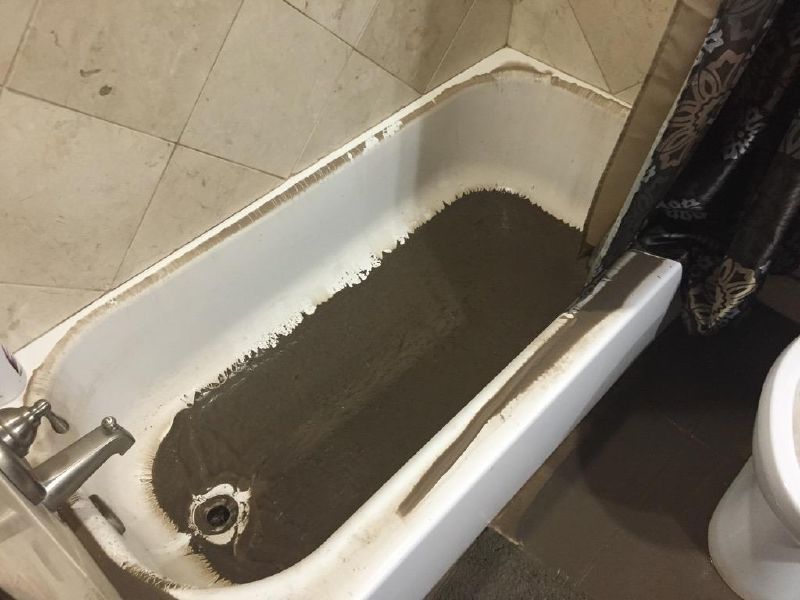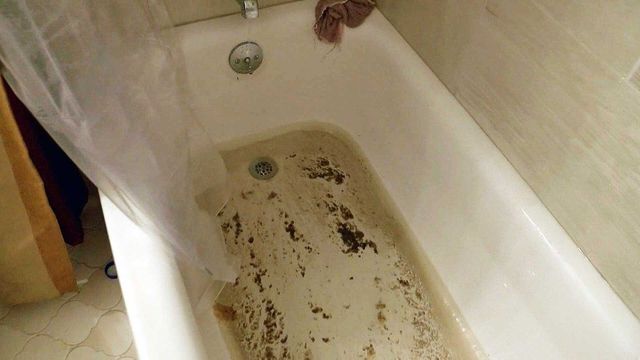Essential Factors Behind Drainage in the Bathtub
Essential Factors Behind Drainage in the Bathtub
Blog Article
They are making a few good pointers on the subject of What to Do if Sewage Starts Coming Up Through Your Bathtub overall in this content in the next paragraphs.

Sewer backup in the bathtub can be a distressing and unhygienic trouble for any type of homeowner. Not only is it troublesome, but it also postures significant health risks and suggests underlying issues with the plumbing system. Comprehending why sewage is coming up with the bathtub is critical for taking proper action to address the trouble properly.
Introduction to the Concern
Understanding the Problem
When sewage starts backing up right into the bathtub, it's a clear indication of a trouble with the drainage system. The wastewater that should be streaming away from your home is instead locating its way back into your home, which can result in significant damage and health hazards.
Prospective Causes
Several aspects can contribute to sewage backup in the tub. From clogs in the sewer line to problems with the plumbing infrastructure, determining the source is crucial for locating a solution.
Typical Reasons for Sewer Back-up
Clogs in the Drain Line
Among the most usual sources of sewage backup is an obstruction in the sewage system line. This can take place because of the accumulation of debris, grease, or international objects in the pipes, stopping proper flow and creating sewage to back up into your bathtub.
Tree Origin Invasion
Tree origins looking for moisture and nutrients can infiltrate sewage system lines through tiny fractures or joints. With time, these roots can grow and increase, creating substantial damages to the pipelines and causing sewage backup issues.
Aging Framework
Older homes may have outdated plumbing systems that are a lot more vulnerable to rust, cracks, and deterioration. As pipelines age, they end up being more vulnerable to leaks and clogs, enhancing the chance of sewer back-up occurrences.
Heavy Rainfall or Flooding
Throughout periods of heavy rainfall or flooding, the drain system may become overloaded with excess water, triggering back-ups and overflows. This can lead to sewer supporting into tubs and other fixtures inside the home.
Health And Wellness Dangers Associated with Sewer Backup
Contamination of Supply Of Water
Sewer back-up can contaminate the water in your home, posturing a severe health danger to you and your family members. Direct exposure to contaminated water can lead to intestinal concerns, skin infections, and various other illnesses.
Spread of Condition
Sewer has harmful bacteria, viruses, and bloodsuckers that can trigger a series of illness, consisting of liver disease, cholera, and gastroenteritis. Entering contact with sewage or contaminated surfaces places you at risk of infection.
Mold Growth
Moisture from sewer backup can develop suitable problems for mold and mildew growth in your home. Mold and mildew spores can exacerbate respiratory system troubles and cause allergies in sensitive individuals, making punctual cleanup important.
Indicators of Sewage Back-up
Foul Odors
Unpleasant smells rising from drains pipes or fixtures, particularly in the washroom, might show sewage backup issues. These odors are usually solid and relentless, signifying an issue that requires immediate interest.
Slow Draining Fixtures
Bath tubs, sinks, and bathrooms that drain slowly or not at all could be experiencing sewage backup. If numerous components are impacted simultaneously, it's likely that the concern stems from a common factor, such as the primary sewer line.
Gurgling Sounds
Unusual gurgling or gurgling noises originating from drains when water is running somewhere else in the house are a measure of air caught in the plumbing system. This air buildup can result from sewage backup and must be examined promptly.
Immediate Actions to Take
Shutting Off Water
In the event of sewer back-up, it's important to turn off the water to prevent further contamination and damage. Find the main water shutoff valve in your home and closed it off up until the concern can be resolved.
Contacting an Expert Plumber
Managing sewer back-up is not a DIY job. Call a licensed plumber with experience in managing sewage-related concerns to evaluate the situation and carry out needed fixings or cleanings.
Staying Clear Of Contact with Infected Water
Up until the sewage backup is fixed, stay clear of contact with contaminated water to prevent the spread of bacteria and pathogens. Put on protective equipment if you have to be in the damaged area and wash your hands thoroughly later.
Safety nets
Routine Upkeep of Drain Lines
Schedule normal assessments and maintenance of your drain lines to identify and deal with prospective issues prior to they rise right into major issues. This can consist of cleaning particles, inspecting for tree root intrusion, and repairing any type of damaged pipelines.
Setting Up Backwater Valves
Take into consideration installing backwater shutoffs in your plumbing system to prevent sewage from flowing back right into your home during periods of heavy rainfall or flooding. These shutoffs immediately close when water starts backing up, securing your residential or commercial property from contamination.
Proper Disposal of House Waste
Stay clear of flushing anything apart from toilet tissue and human waste down the commode to stop obstructions and obstructions in the sewer line. Dispose of grease, oil, and various other home chemicals effectively to reduce the danger of plumbing issues.
Tidying up After Sewage Back-up
Disinfection Procedures
Completely disinfect and sanitize impacted areas after sewage backup to get rid of unsafe bacteria and stop mold growth. Usage proper cleaning products and safety gear to guarantee risk-free and reliable cleanup.
Remediation of Influenced Locations
Repair any damage to flooring, walls, or components brought on by sewage backup. Relying on the extent of the damage, you may need to change carpeting, drywall, or various other materials to recover your home to its pre-loss problem.
Why is Sewage Coming Up Through Your Bathtub?
Reasons You May Have Sewage in Your Bathtub
All the drains in your home lead down different pipes to get to the main sewer line. If you’re seeing sewage in the bathtub, the problem is that the main sewer line is clogged up, which is causing the water running through other drains to be pushed back into other pipes. The problem isn’t the bathtub, but the main line. The sewer line can get backed up by anything that goes down the drain, from food waste, hair and soap particles to jewelry or children’s toys. Tree branches or dirt can also impact the sewer line. If you’re seeing sewage in the bathtub, you have a big problem that usually needs a professional plumber. Trying to fix this problem without the right tools or knowledge can lead to bigger plumbing problems.
Fixing a Clogged Sewage Line
Although you shouldn’t try to fix the clogged sewer line on your own, you may be able to mitigate the issue until you can get a plumber to your home. A plunger isn’t going to help, because it won’t be able to reach the sewage drain to unblock the problem.
Turn Off Water
Find the main shutoff valve to your home to turn off the water. This prevents more water from going down the drain which is only going to flow back into your bathtub.
Snake the Toilet and Drain
Start by using a drain pipe snake to clean out the toilet drain. Rotate the snake clockwise when you push the snake down. As you pull it out, the snake should spin counterclockwise. Follow up by snaking out the bathtub drain. If you are successful, both the toilet and shower will drain efficiently. If you’re not successful, you probably have a bigger problem than your tools and experience can manage.
Contact a Professional Plumber
Pros have the tools to find the source of the problem and the experience to manage big blockages without causing more damage to your pipes. It can save you a lot of stress by contacting the professionals sooner rather than later.
Identify the Early Signs of a Clogged Sewage Line
If you’re gearing up for a holiday family gathering or just want to avoid the hassle of a clogged sewage line in your home, make sure you recognize the signs of a clogged sewer line.
Slow drains are a sign of a sewer line problem. Gurgling drains from any drain in your home indicate that you may have an obstruction in the drains. If your toilet keeps getting clogged, it might be a problem with the sewer line. When you see laundry water or water from the dishwasher in different sinks in the home, it’s an indication that your sewer drain is beginning to get backed up. These symptoms can often be “fixed” temporarily to get through a day or week before you start seeing the same problem. When it comes to plumbing problems, you want to fix the root of the problem instead of muddling through. The clog will not go away on its own.
https://handymanconnection.com/mississauga/articles/why-is-sewage-coming-up-through-your-bathtub/

I am just very taken with Why sewage is coming up through your bathtub and I really hope you appreciated the page. Sharing is caring. Helping others is fun. Thanks so much for going through it.
Course Detail
Report this page